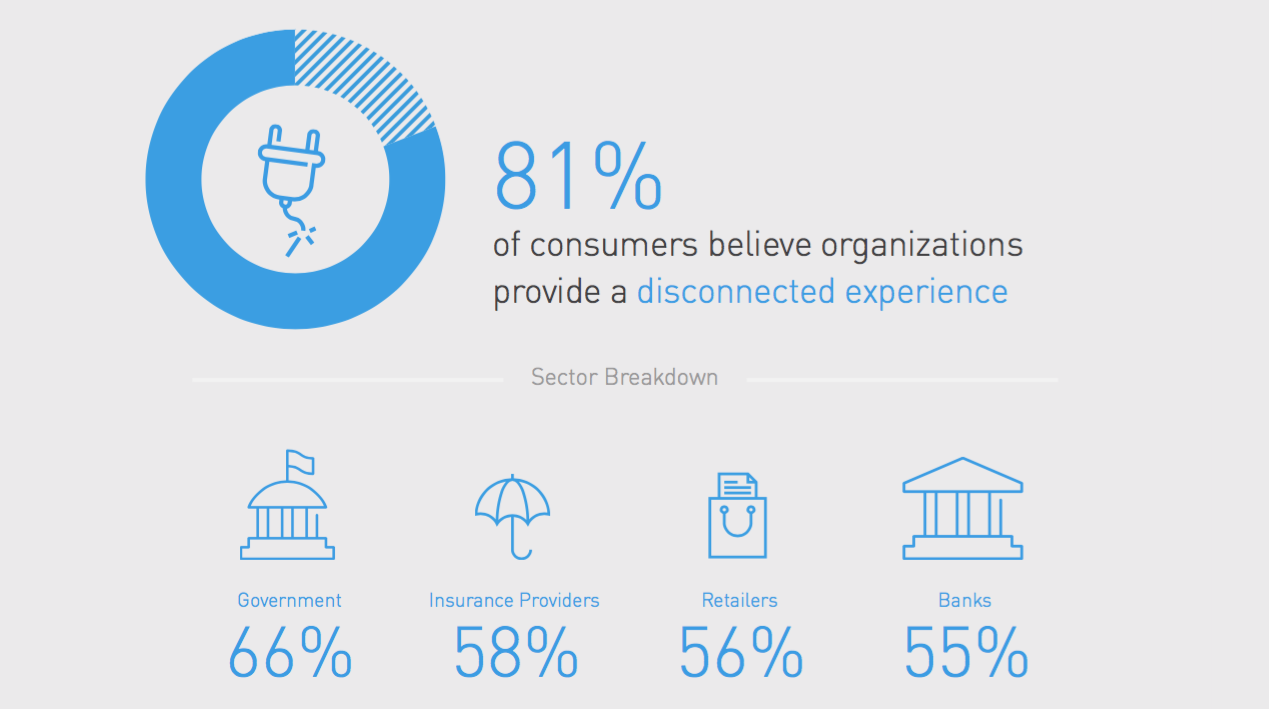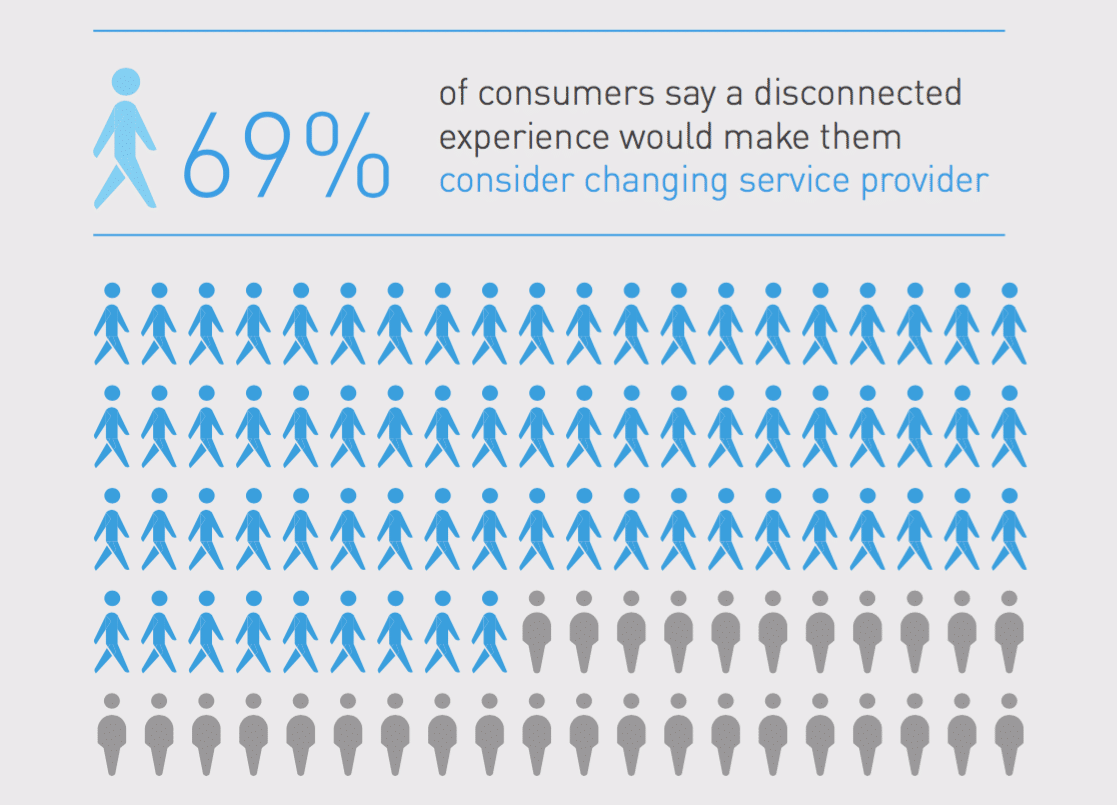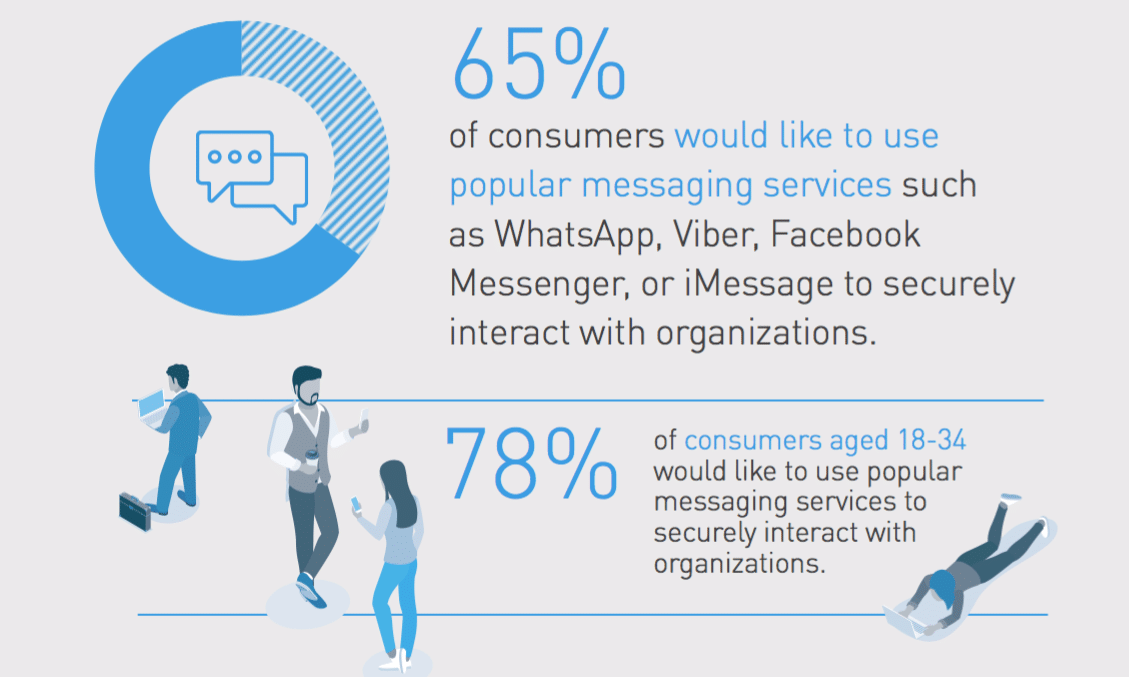It’s a 21st century Achilles Heel for today’s companies, regardless of size, status or industry—and a problem that keeps getting worse. A whopping four out of five global consumers continue to receive disconnected experiences with brands and businesses—and according to new research from application network platform MuleSoft, consumers are now more willing than ever to seek out ones who can deliver more seamlessly connected, personalized experiences.
Based on the findings of the firm’s Customer Experience and the Connectivity Chasm report, it’s urgently clear that organizations must deliver the connected experiences consumers expect—or risk losing their loyalty and business. But how can brands finally get a handle on this ever-elusive problem?
As is more often the case these days, it’s actually a data conundrum
“Globally, consumers are feeling the effects of data silos that create disconnected experiences,” said Simon Parmett, CEO of MuleSoft, in a news release. “To meet consumer expectations, organizations must integrate disparate data sources to better understand their customers and make every touchpoint an opportunity to earn loyalty and add value. With the help of APIs and API-led integration, brands can position for future innovation, create more meaningful relationships and earn customer trust.”

Frustration with disconnected experiences continues
Globally, 82 percent of consumers believe organizations in at least one of the five sectors surveyed—banking, insurance, retail, healthcare and public sector—provide a disconnected experience, failing to recognize preferences across touchpoints and provide relevant information in a timely manner. This figure indicates a lack of improvement in customer experience (81 percent in 2018) and is pushing consumers to consider new service providers.
- Nearly three-quarters (72 percent) of global consumers would consider changing service providers in response to receiving a disconnected experience.
- Younger consumers aged 18-34 years old are the least tolerant of disconnected experiences (78 percent) and are more willing to change providers compared to older consumers aged 35-54 (71 percent) and 55+ (70 percent).
- Consumers in Singapore (87 percent), the U.S. (78 percent) and Australia (77 percent) are the most likely to consider changing providers as a result of a disconnected experience.

Consumers are conflicted with sharing data to fuel connected experiences
To receive a more personalized experience, 61 percent of global consumers would be willing for service providers in at least one of the sectors surveyed—banking, insurance, retail, healthcare and public sector – to share relevant personal information with partners and trusted third parties.
- Seventy-nine percent of millennials and Generation Z indicate they would be willing to share their relevant personal information with partners and trusted third parties to receive a more personalized experience.
- However, more than half of consumers (53 percent) say they’ve become more wary about sharing personal data over the last 12 months.
- In fact, only 42 percent of consumers think data protection legislation has improved how organizations use personal data.
- Consumers in the U.S. (37 percent), Germany (37 percent), Australia (33 percent) and Japan (30 percent) were the least confident that data protection legislation has improved how organizations use personal data.

Across industries, consumers want organizations to nail the basics
The report shows that across industries, consumers’ expectations continue to evolve, but getting the basics right is vital to maintain customer satisfaction and loyalty.
- Eighty percent of consumers say out-of-date or inaccurate data (e.g., inventory availability, delivery tracking information) would make them more likely to shop with an alternative retailer next time.
- The most important factors in determining retail customer loyalty are cost (63 percent), the accuracy of inventory availability/real-time delivery information (41 percent), in-store customer experience (40 percent), and consistent experiences across in-store, online and mobile (36 percent).
- More than a quarter (27 percent) of people have switched or considered switching their bank in the last 12 months in order to receive a better digital experience. This number is even higher (49 percent) amongst 18-34 years olds.
- Consumers say that filing a claim with insurance providers is the most time-consuming (70 percent) and the second most complicated (40 percent) task.
- Sixty-one percent of consumers think that healthcare providers make effective use of the data made available to them (e.g., personal health data from wearable tech and apps) to deliver a better standard of care. This is a significant increase from 42 percent in 2018.
- Seventy-three percent of citizens polled feel public sector organizations lag behind the private sector when it comes to providing connected multi-channel services.

The Coherence Economy takes off among millennials
Consumers are starting to become more familiar with engaging multiple service providers through one application or experience. Common experiences like using a music streaming service via a ride hailing app and integrating multiple financial accounts into a planning app are part of the broader Coherence Economy—a new approach to customer engagement where multiple brands partner to add value through an ecosystem approach.
- More than a quarter (27 percent) of global consumers say they often engage with multiple service providers through a single app or experience.
- This number climbs to nearly half (49 percent) for 18-34 year olds, indicating millennials’ desire for these experiences.
- Interestingly, consumers in the U.K. (21 percent) and U.S. (24 percent) are less frequently engaged in coherent experiences compared to those in France (36 percent) and Singapore (47 percent).
“Organizations must cultivate partnerships to surprise and delight consumers. In the Coherence Economy, organizations need to develop strategies to collaborate with partners in a digital ecosystem and orchestrate personalized experiences for consumers,” said Uri Sarid, CTO at MuleSoft, in the release. “In order to innovate at scale and accelerate the delivery of products and experiences to customers, organizations will likely need to leverage a majority of third party services. By leveraging an API-led approach to integration, brands across all industries can easily connect their applications, data and devices to provide a holistic view of the consumer and easily empower new, connected experiences.”
This global survey was commissioned by MuleSoft and independently carried out by Opinium Research. The total sample size was 9,030 adults: U.K. (2,002 adults), U.S. (2,003 adults), Germany (1,000 adults), France (1,002 adults), Australia (1,000 adults). Singapore (1,010 adults) and Japan (1,013). Demographic split 18-34 years-old (2,084 adults), 35-54-years-old (3,410 adults) and 55+ years-old (3,536 adults). Fieldwork was undertaken online between 15-22 August 2019. The figures have been weighted and are representative of adult populations (aged 18+).








